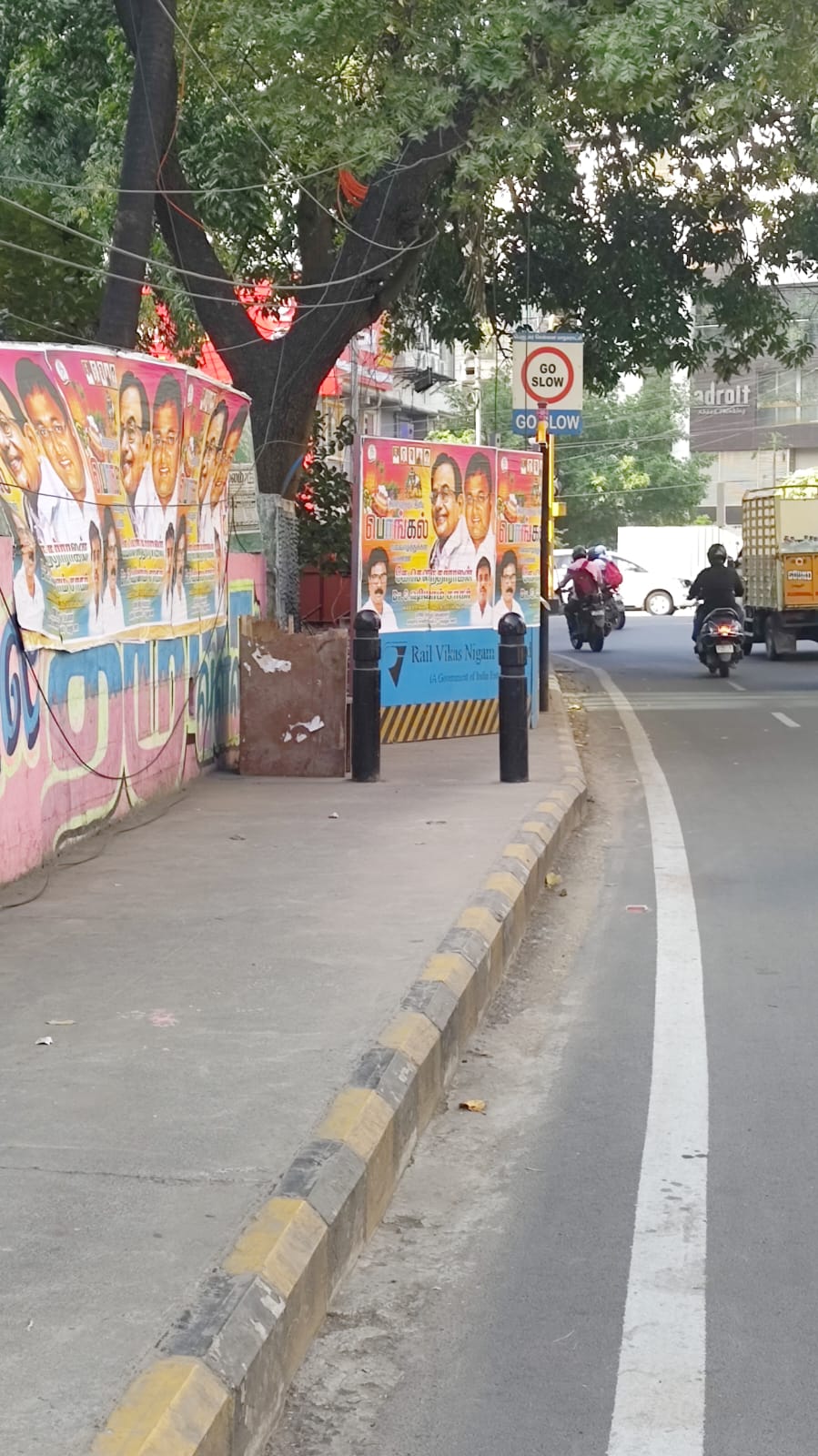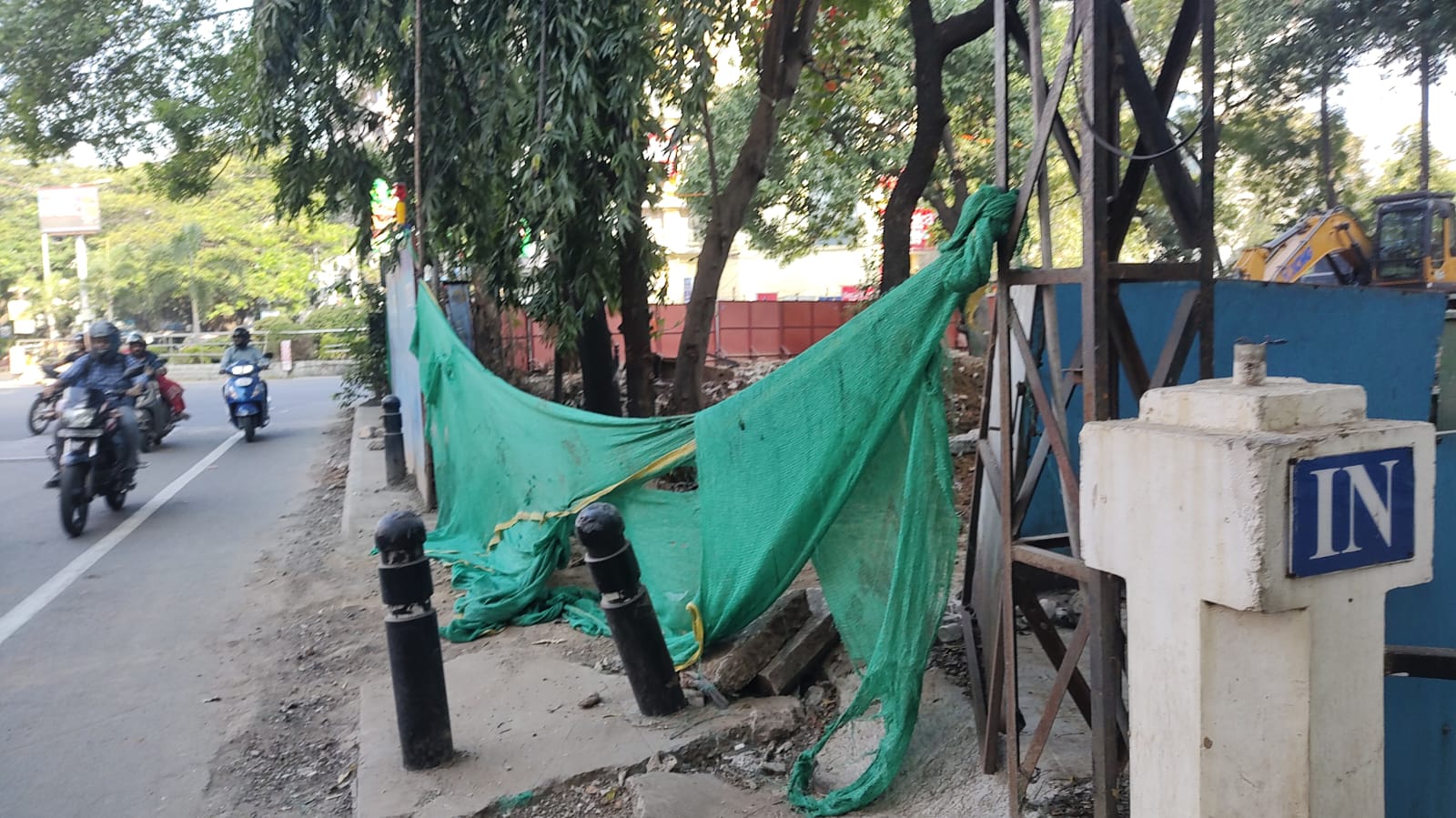In 2022, it felt like the entire city of Chennai was dug up to redo the stormwater drains. In 2024, parts of the city are again being dug up. This time for the next phase of Chennai Metro. Motorists were and are understandably annoyed by the resulting slow down in traffic and the diversions.
The daily commute both times have been a nightmare - as a pedestrian and cyclist. During the stormwater drain digging days, cycling/walking was a tightrope between getting mowed down by a motor vehicle or getting crucified on the iron rods sticking out of the troughs dug along the road. At least now with the Metro work, I only worry about the motor vehicles. The drawback being that Metro work is going to take several years and every day for the next 3-4 years, I have to walk/cycle between the traffic and the Metro boards that bracingly tell you “Inconvenience today for a better tomorrow”. The question is whether I will live to see tomorrow - better or otherwise.

Image: Footpath to nowhere - Haddows Road | CAG
Even when there is no construction, footpaths are few and far between. If they exist, they are taken over by parked vehicles, shops, garbage, and utilities (electricity junction boxes, etc). The obliviousness of municipal agencies to the needs and rights of pedestrians and cyclists is only rivalled by that of motorists. So it comes as no surprise that when there is construction work, agencies think immediately about motorists and the discomfort they will face but ignore pedestrian and cyclist safety.

Image: Footpaths are always the collateral damage - Haddows Road | CAG
Not meeting legal requirements
The mandatory Indian Roads Congress (IRC) Guidelines (IRC - SP 55: 2014) require a Work Zone Traffic Management Plan (WZTMP) to be developed and implemented when road works are being done. The WZTMP lays out how much planning needs to go in before any road work starts. There needs to be safety for everyone in and around the road work - be it workers on site or pedestrians or motorists driving by. In terms of vulnerable road users, it calls for alternate routes for pedestrians to be put in which are safe, clearly marked, and accessible. There must be adequate information provided so that pedestrians can easily find and use the temporary paths and as the road works proceed, these paths must be evaluated and shifted as required. Safe travel across intersections and access to temporary bus stops is also a must as is setting up a buffer zone between the outer pedestrian barrier and traffic.
Looking at current road work in the city, none of these are met. There is no safe path designated for pedestrians. In some locations, Metro has given a railing alongside their work sites so pedestrians have the metro boards on one side and the rail on the other. While it's better than nothing, it's usually very narrow - even a single person walking just about fits in and it doesnt connect to footpaths beyond the dug up area.
When access to a road is being blocked by roadworks, vehicles are directed to take alternate routes but how pedestrians are supposed to get through is a mystery. I suppose the pedestrian too must take the extra 1km detour? Considering the traffic, the weather, and the vulnerability of pedestrians, shouldn't there be a short and safe corridor planned for?
Pedestrian crossings also disappear during such work. To regulate traffic, many roads end up being one-ways with hip-high barricades, causing pedestrians to either risk their lives in clambering over these or have to walk a long way round.
Since public transit users are also pedestrians at some point of the commute, such road works that disrupt public transit, especially bus service, means these commuters are often left in the lurch in accessing their bus. In January 2024, the government ran announcements on social media and elsewhere about the traffic diversions in specific locations in the city. There were even route maps shared as to how private vehicles must navigate the blockage. However, there was no information on how public buses would be diverted and where the new bus stops would be. Months after these diversions commenced, there is still no information in the public domain on the modified bus routes. In one or two places a small sign indicating a bus stop has cropped up, but there is no shelter, no indication of what buses will stop there. The apps for the bus service continue to show the old/original bus routes.
Sense of fatality
This obliviousness to pedestrian and cyclist safety has become so entrenched that even pedestrians and cyclists shrug it off as just the way things are. It is a sad comment on our collective mindset, that the rights of a living, breathing person don’t match up to the rights we ascribe to a motorised metal box.
Add new comment